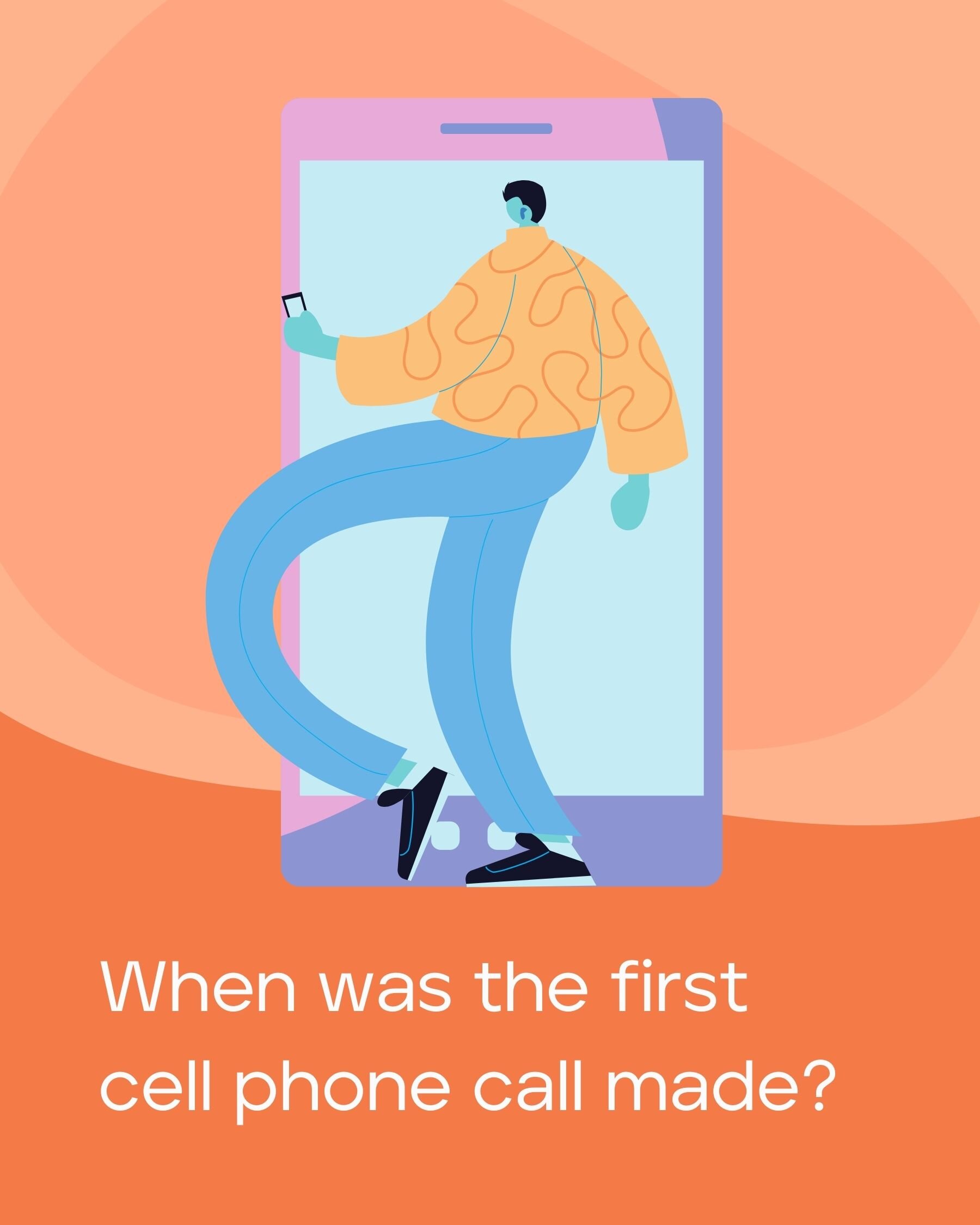The first cell phone call wasn’t made that long ago when you consider how long we’ve been using traditional telephones.
Motorola won the mobile race, manufacturing the prototype used to make the first cell phone call. Alexander Graham Bell would be proud, despite the first mobile phone conversation being nothing as classic as “Mr. Watson, come here; I want you.”
The first cell phone call was made nearly 100 years after the first telephone call, and here’s what to know about who placed it and what’s happened since.
What was the first cell phone?
As mentioned, Motorola won the mobile race back in the 1970s. The first cell phone ever made debuted in 1973 and featured a handset that weighed 4.4 pounds. However, the idea of mobile phones was around long before that.
Eric Tigerstedt, an inventor from Finland, filed a patent in 1917 for a device that he claimed would be a "pocket-size folding telephone with a very thin microphone.” Fast-forward to 1973, and his dream had finally become a reality.
Despite companies creating the first mobile phones in the early 1970s, it wasn’t until 1979 that the first cellular network (1G) was developed and launched in Japan. Denmark, Norway, Finland, and Sweden followed quickly with their own network, and in the mid-1980s, numerous other countries had begun creating cell networks.
This timeline makes sense, at least in the United States, considering that commercial cell devices weren’t available until 1983. Motorola released the 8000X in September of that year with a retail price tag of nearly $4,000.
When was the first cell phone call made?
Let’s get back to the actual call made on the first cell phone. The first mobile phone call was made on April 3rd, 1973, almost exactly 100 years after the first telephone call made by Alexander Graham Bell on March 10th, 1876.
On April 3rd, 1973, Motorola employee Martin Cooper stepped out onto the street in New York City, roughly between 53rd and 54th Streets, and placed a call to Bell Labs headquarters in New Jersey. He was using a prototype of the Motorola DynaTAC 8000X (the one we mentioned above that eventually retailed for nearly $4,000).
While he can’t remember exactly what he said in the call, he remembers asking something along the lines of, “I’m just calling to see if it sounds good on your end” (we’re getting flashbacks of early 2000s Verizon’s commercials with the “can you hear me now?” guy).
What about the first text message?
As you can imagine, text messages followed shortly after mobile phone calls. While you might remember text messaging becoming a “thing” in the early 2000s, the first text message ever sent was received on December 3rd, 1992.
The message? “Merry Christmas.” The device? An Orbitel 901.
A young engineer wrote the message to Richard Jarvis, who was, at the time, a top executive at British phone company Vodafone. And thus began the age of SMS (or Short Messaging Service) in which we had to press the number 7 four times just to write out the letter “s” (ah, the good ole days).
Where we’ve come since 1973
Compare the Motorola DynaTAC 8000X to the new iPhone XR released in 2020 or the impressive Samsung Galaxy Galaxy Note20. Long gone are the days when we had to type using the dial pad; now, phones come powered by just as much technology that once powered the world’s first personal computers.
Today, people use cell phones for more than just calling or even texting. Cell phones are our lifeline and we use them for taking photos, recording videos, playing games, sending voice messages, sharing memes on social media, and even for work.
We use them for so much, in fact, that we’ve forgotten how to separate work from play and personal from private; with everything right at our fingertips, the lines are pretty blurred.
If you’d like to get back to a time when you could separate your work number from your private number or contact a new date using a number that they couldn’t later stalk you on, it might be time to check out Burner.
From the first cell phone call to Burner phones
Burner phones have evolved since their height of popularity a couple of decades ago in the same way that mobile phones have. Now, you don’t even have to physically throw away your phone when you’re ready to “burn” it and all the evidence on it.
Now, there’s the Burner app. You get to choose your own phone number, use it for however long you want, and enjoy the peace of mind in knowing that your privacy is protected.
It’s a simple solution to the mess that can sometimes be our daily lives. In between your day job, freelance work, your dating life, and your family life, there’s a lot going on. Organize it all with Burner numbers. Get started today with a free number.








